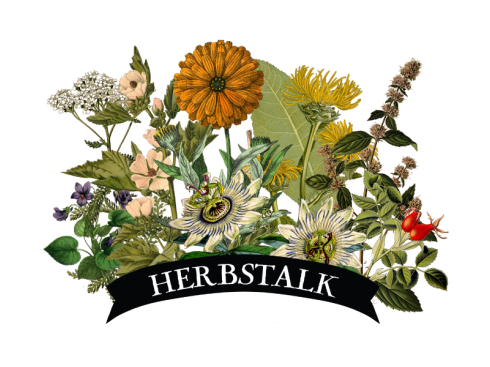|
contributed by Brendan Kelly
Today's post includes two videos created by one of our wonderful teachers, Brendan Kelly. He is the author of "The Yin and Yang of Climate Crisis", and in these short video clips he talks about the important connection between personal and ecological health. You can learn more about his book here, and see the details of his class here, Global Warming & Internal Inflammation, which will be offered at Herbstalk on June 3rd. Part I:

Brendan Kelly has a master’s degree in acupuncture and teaches about Chinese medicine at schools, colleges, universities and conferences around the country. He is a faculty member at Johnson State College in VT and the Academy for Five Element Acupuncture in FL. He has 20 years experience in western herbs, with 12 years in acupuncture and Chinese herbal medicine. He practices acupuncture and Chinese and western herbal medicine full time at the clinic he co-founded, Jade Mountain Wellness, in Burlington, VT. In 2015 he published his first book "The Yin and Yang of Climate Crisis" which presents the deeper, root causes of our warming planet and its connection to our personal and collective health.
by Brendan Kelly
In my experience as an acupuncturist and herbalist, it’s very possible to address a significant diagnosis like cancer by waging peace, rather than the more common western medical approach of waging war on the condition. For Chinese medicine, an underlying issue with cancer is the diagnosis of heat which causes an over-proliferation of unhealthy cells. Rather than looking only at the symptom itself, in Chinese medicine we look to where the symptom is coming from. Submitted by Adam Stark. Persian Silk Tree (Albizia julibrissen) is one of my favorite plants, and not just as medicine, either. It is a graceful, gracious neighbor in the garden. Amidst leaves like ferns, its flowers, like feathers, float like little puffs of smoke. There’s something delicate about Persian Silk Tree, but not exactly. It bends in the wind, but doesn’t break. Its leaves fold inwards on themselves in the dark and in the rain, but always unfurl again. And while its flowers look like they’d blow away in the first light breeze, they hang tough through storms, all the way through summer and into fall. I suppose you might find a metaphor in that resilience. Persian Silk Tree is almost entirely unknown in Western herbalism, and there’s barely a shred of formal research on it anywhere. In China, however, it’s called He Huan – the Tree of Happiness. Folk names for Persian Silk Tree in both the Middle East and Japan reflect that the plant is a “night sleeper” – that its leaves fold in upon themselves when the sun goes down. I was first introduced to Persian Silk Tree about ten years ago at the Medicines from the Earth conference, when the herbalist David Winston called it “the most profound antidepressant” he had ever used in his nearly 30 years of clinical practice. He talked about it for “stagnant depression” and as a remedy for a “broken heart.” I had never even heard of it. Well, I’m the kind of herbalist who likes to down a whole teapot of something before I even offer a drop to a client. So I ran right home and got some. Now, bear in mind I’m not an unhappy person to begin with. Bear in mind, too, that I dosed myself higher than a person probably ought to. But within 3-4 days, I was walking around with an idiot grin on my face for no good reason. I’ve had a fair amount of experience with Silk Tree since then. I’ve given it to quite a few people, alone and in formulas, and it has usually (but not always) worked like a charm. It is a brightening plant, but also a calming one. Persian Silk Tree is especially indicated in a high-energy, high-strung, anxious, agitated, irritable depression, with light or disordered sleep. Sort of what the TCM practitioners describe as “disturbed Shen,” and the Ayurvedic docs call “deranged Vata.” Or for a broken heart. David Winston’s description of “stagnant depression” is a good fit. That being said, it isn’t necessarily limited to one type of depression, or agitation, or restlessness. Combine it with the right herbs, and you can fit it in to most protocols. I use it as a lead herb around depression and grief, and as a secondary herb for chronic stress/sleeplessness, nervous heart, and even ADHD. The bark is considered more grounding; the flowers more uplifting. I have not noticed any huge differences between the two. At a moderate dose, it might take a week or so to start working, but its effects are both pervasive and profound. Cloudy days feel brighter. Sleep welcomes us more readily, and is generally more restoring; waking is less of a chore. ECOLOGY: Persian Silk Tree is an aggressive invasive species in the southern United States. Up here in Massachusetts, it’ll grow (in fact, the photos were all taken in a small Somerville front yard, less than a mile from Herbstalk) but the climate doesn’t entirely suit it. So it’s not going to take over. SAFETY: While I’ve never run into any problems, and there are no reports (to my knowledge) of toxicity, I would suggest that Silk Tree be used cautiously in conjunction with pharmaceutical antidepressants, benzodiazapines, barbituates, and the supplement 5-HTP. Personally, I’ve always been afraid to use neuroactive substances with anti-seizure drugs. As with anything that may benefit anxiety and/or agitation, there’s the chance that taking a whole bunch of it may make you drowsy. DOSING: 1.5-3 ml of the standard tincture, twice a day. Or 15-20 grams of the bark, decocted, throughout the day.  Adam Stark has been working with and writing about herbs for more than 15 years. He is a co-owner at Debra’s Natural Gourmet, and the founder, formulator (and namesake!) at Adam Herbs. Submitted by Larken Bunce of the Vermont Center for Integrative Herbalism. Spring is coming to the forest. Even as gale winds continue to blow and snow remains a constant presence in the far Northeast that I call home, the birds have started to sing. The sun is higher in the sky, sending strong shafts of light glancing through branches swelling with leaf buds. On a recent day, I’m sure I heard the rushing whisper of sap rising. In the people around me, I sense a kind of readiness, even an impatience, to burst forth, start moving, rise up, make a plan, get gardens in the ground. Many folks are getting antsy. I’ve even seen t-shirts and shorts when the thermometer approaches 40 degrees! And then there are those who are still enjoying the hibernation of shorter days, richer meals, warm fires. They might be feeling a bit nervous, even fearful about the coming activity, the expectations to jump into action, know the path and get to work on another season of growth. These folks might be getting a bit irritated in their own way, too, as when being asked an important question just a little sooner than you’ve arrived at an answer. So, there’s early Spring in a nutshell: the dynamic tension between moving ahead into expansive, decisive action and staying wrapped up tight in rest and unknowing, between rest and productivity, solitude and community. You’ve probably noticed that you lean one way or the other, towards wanting Spring to hurry up and arrive in earnest and wishing Winter would stay a bit longer. And since the seasons acquiesce to no one, you might notice that either way you lean, you are not satisfied. Except, of course, if you’re content with just exactly what is, right now–if you’re comfortable being flexible, letting life flow through you, just as it is. Because the truth about Spring–at least the face it wears here in the Northeast–is that sometimes it’s warm with promise, other times blustering and harsh. The constant, especially now, is change. If you’re one of the folks able to stay present and navigate this time of transition, you may find that you are able to bend gracefully, not break in frustration under these mutable conditions. Like the young maples in the forest, you might find that as the day is warm and night cold, the sap in you rises just as it should, pulsing in rhythm with the fluctuations, even dependent on them. At exactly the right time, your leaves will burst forth, extending toward the light, and arch skyward into the song-filled air. These are some of the core teachings of Spring. Flexibility. Ability to respond at the perfect moment. Reveling in change. Channeling inner treasures, discovered and accumulated during deep rest, into powerful manifestations of who we are. These are Spring’s requirement of us, as well as its invitation. Though Chinese medicine can sometimes seem to be a maze of abstract theory to those not accustomed to its language or concepts, in the Five Phases (or Elements), the Chinese elegantly captured what I’ve found to be timeless insights about life on this planet. Essentially, they recorded how the landscape is reflected in the bodies, hearts and minds of humans in an analogous, inner terrain. While this particular tradition is rooted in Taoist alchemical, even shamanic, philosophies and practices specific to China, we can see that the essence of this system bears truth in multiple bioregional and cultural contexts. Identifying the core features which resonate with our own rich experiences and diverse locales, we begin to craft a modern, living, breathing medicine, rooted firmly to place. No matter where we are, we can see the teachings and invitations of each Phase present in the cycles of our lives. We see ourselves as glints in our parents’ DNA, becoming infants and children, young adults, parents, and then elders, preparing to transition back to the earth. We see the dark of midnight, sliding into dawn, noon-day sun, afternoon’s glow, evening, and night again. We see the plants as they move from seed to sprout, to flower, to fruit, to making seed and letting it fall, beginning the cycle anew. We see our fears, our hopes, our passion, our care and tenderness, and our solitude with spirit. We can universally recognize these cycles as expressed in ourselves and the land, though Spring in one place might have a different face than in another, just as we are each a singular terrain with unique stories. Regardless of place, this living system affirms that Nature, in all its complexity and diversity, is a perfect, self-sustaining whole. In answering Nature’s invitation to become attentive to our inner landscapes, we can experience the same complex, diverse and imperfectly-perfect wholeness. In essence, it is an invitation to dynamic health and to belonging. So, as the snows recede and ever more green peeks through, as creatures begin to emerge from winter dens and our seed packets start to call to us from wherever they’ve been tucked away, consider apprenticing yourself to Spring. How can you flow gracefully into this season embodying all at once the lithe sapling, the bursting bud, and the birdsong that fills the sky?
|
Archives
November 2023
Categories
All
|
Join the Newsletter!
Receive news about future Herbstalk events
Thank you!
You have successfully joined our subscriber list.
Copyright © Herbstalk 2024

 RSS Feed
RSS Feed